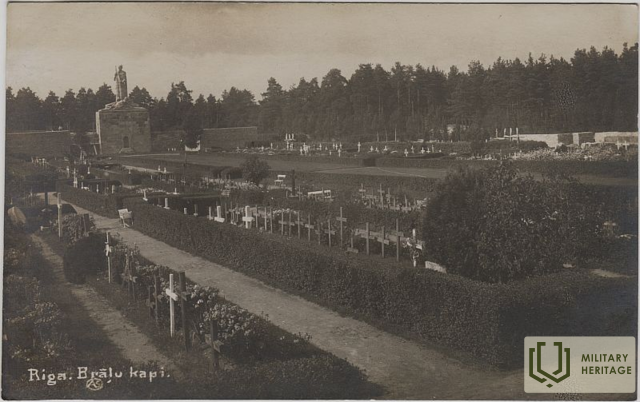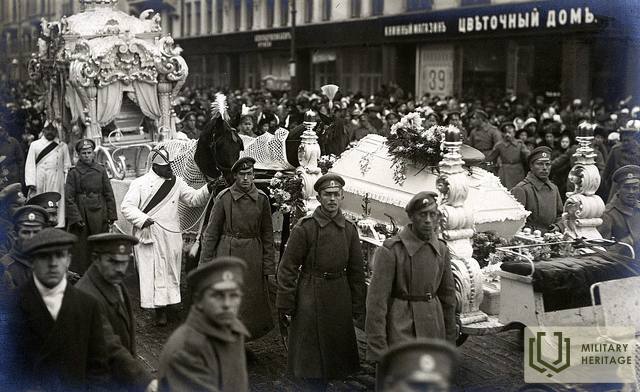This is how the Brothers' Cemetery in Riga was born
The narrator describes the circumstances under which the most famous Latvian memorial, dedicated to fallen soldiers, was created. As can be seen in the memoirs, the cemetery of national heroes faced a series of obstacles and unfavorable - dismissive attitudes not only from the church, but also from the Riga city government.
“There is no person in Latvia who does not know that there is a Brothers' Cemetery in Riga. The number of people who have visited it is incalculable. And yet how small the number of those who know how it came into being and what battles were fought for it in their time. But can anyone not know it? Soon after the outbreak of the World War, the administrations of the Dome and St. Peter's churches in Riga had allocated 146 graves in the Forest Cemetery at their disposal for the burial of fallen Lutheran soldiers who had no relatives in Riga. When the Latvian Riflemen Battalion was established in 1915, the organizing committee of this battalion began to bury the first fallen riflemen here. Later it turned out to be necessary to expand this cemetery. The organizing committee turned to the administrations of the Dome and St. Peter's churches with a corresponding request. And here we had to witness such a tragic sight that the riflemen, who had fallen in battle while protecting their native land, were denied this even in their native land, even if only for a sand pillow for their final resting place. A heated struggle then broke out between the organizing committee and the administrations of the aforementioned churches, which also involved the Riga City Council and the City Council. The organizing committee submitted the following article to the city council on June 3, 1916, under No. 5827: «The administrations of the Riga Evangelical Lutheran Dom and Peter's churches had allocated a plot of land in the Forest Cemetery for the burial of fallen soldiers. Since 138 riflemen had already been buried in the aforementioned place, the organizing committee turned to the aforementioned administrations with a question on what basis they would be willing to allocate an additional plot of land, but received a categorical refusal. From such statements of the administrations and also the excuse that they «do not find it possible to allocate any other plot of land in the Forest Cemetery at all, because this cemetery must first serve the needs of the Dom and Peter's congregations», it is clearly visible that they do not want to go towards the organizing committee.
“(..) The place that will be designated as a Brothers' Cemetery for the fallen riflemen will later, when peace is established in our country, be limited by a fence, and the people who will come to visit these graves will not have any connection with the members of the parishes of the Dome and Peter's churches, whose interests the aforementioned administration places above all else. Moreover, it should not be forgotten that these administrations pay the city only 1 ruble a year for the huge area of land designated to them in the Forest Cemetery, and it will not suffer any material losses from the fact that a relatively small piece of land was allocated for the Latvian riflemen. The external appearance of these Brothers' Cemetery of the Riflemen will also not create any ugliness in the general character of the Forest Cemetery, because these Brothers' Cemetery will be constantly cared for and looked after by both the organizing committee and the relatives of the fallen riflemen. At first, the care of these graves was taken care of by the organizing committee and a little later by the Latvian Red Cross.
Thus was born the cemetery, where legendary heroes from all the farms of the Latvian land rest, both riflemen and later participants in the liberation war. They fought like brothers, they fell like brothers, and now they rest fraternally in a common grave, giving this sanctuary the only name that can be given to it - the Brothers' Cemetery (..)"
newspaper “Latvian Rifleman”, No. 12, 1934. Article title “This is how the Brothers' Cemetery in Riga was born”
Related topics
Related objects
Brothers' Cemetery in Riga
Riga Brothers’ Cemetery is located in the northern district of Riga. The cemetery extends over an area of 9 ha and is the most outstanding and significant memorial ensemble in Latvia dedicated to the fallen Latvian soldiers. About 3,000 soldiers are buried here. The Brothers’ Cemetery was created during World War I after the first three Latvian Riflemen, who fell in Tīreļpurvs in the battle against the German Army, were buried here. Later Latvian soldiers who had died in other battles and wars would also be buried in the Brothers’ Cemetery. The memorial is based on the design of the sculptor Kārlis Zāle, and is the first memorial ensemble in Europe with such landscape, architecture and sculptural value. It uses elements typical to the Latvian landscape, traditional farmsteads, Latvian folklore and history that praise the characteristics of soldiers and tell the story of the way of the soldier. The memorial was unveiled in 1936 and it has three parts: ‘The Road of Though’ which is a 250 m long alley, ‘Terrace of Heroes’ with the Altar of the Sacred Flame and ensemble the Sacred Oak Grove, and the burial ground with the Latvian wall and a memorial of a mother with her fallen sons.








